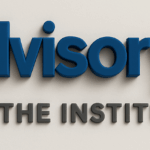Guest Author: Ronald Recardo
In this article, we will discuss the final three tenets for outstanding leadership.
- Be ethical & values driven. One of the leaders we interviewed had extensive military experience as an army officer. He said there is a very fine line when you command solders and ask themto charge the enemy – 50% of them are willing to risk their lives for you and50% are tempted to shoot you in the back.
Perhaps his sidebar was tongue on cheek but having formal authority will only get your staff to follow you to a certain extent. You have to tap other forms of power. The leaders who were the highest performing exhibited the following traits:
- Honesty: They were direct, they said what they meant,and meant what they said! They exhibitionist selective memory when situations got testy.
- Respect for others: The highest performing leaders were acutely aware that results did not take precedence over a high staff body count. Respecting the feelings, needs,impact of decisions on others was a very critical success factor.
- Passion: Most of the leaders we interviewed described themselves as “alpha males and females” who were uber competitive. Several admitted early in their career they were extremely driven by financial compensation. In most of the cases, as the leaders matured they replaced their drive for financial wealth creation with a childlike passion. They really loved what they did!
- Integrity: Leaders uniformly communicated the importance of having a moral compass, unquestionable ethical standards, and consistent set of values so that staff understood the boundaries of what is and is not acceptable.
- Trust: One might argue that if you model most of the key-points detailed in this article trust is the likely outcome from a relationship standpoint.
- A-Players only want to report to and work with other A-Players. A famous sports coach once said, “I am only as good as the talent of my players. My leadership only makes the difference in 10-20% of the games.” While these exact percentages may not translate to winning at business, directionally it causes one to stop and ponder. One of the discussions I had early in my career bears restatement. I was working with a grizzled executive at UTC who once said “For every person on my staff who isn’t holding up their own weight 10 other people know it and don’t respect me as a manager.” That conversation happened over twenty-five years ago and I still remember it like it was yesterday!
The highest performing leaders set aggressive goals, hold staff accountable for results, and get rid of the bottom feeders. A players will not accept reporting to C Players long term. They will get very frustrated and either reduce their effort or seek employment elsewhere further diluting your talent gene pool. Key talent does not stay with a company because of compensation, the most common reason why key talent leaves is due to poor leadership! If you don’t cull the bottom feeders, you create an organizational culture that is accepting of good enough. If this seems harsh reflect on your last experience working with state or federal government employees – the malaise, the lack of sense of urgency, the inefficiency….
One of the leaders we interviewed summed it up best, “to be successful in the future a leader must be a broad thinker, fully understand the markets they compete in and the overall global ecosystem, be a strong developer of other leaders, and not lower the performance bar for employees who are not willing or able.” The most successful leaders must develop skills at growing their business, employ cost rationalizations skills for stabilization during business downturns, and employ strong leadership skills to engage and direct the workforce. Toachieve this organization’s will need to do a much better job of aligning their HR practices (e.g., employment value proposition, talent acquisition, performance measurement, performance management, and rewards/recognition). Lastly the talent assessment, acquisition,and development processes have to better designed and managed so a culture of high dedication to excellence replaces the all too prevalent culture of hunkering down, risk avoidance, and managing up.
- Don’t play the game not to lose, be a calculated risk-taker. In the game of football when a team is ahead in points and it’s the waning minutes of the game they often use a strategy called the “prevent defense” to make it exceptionally hard for the other team to score.
The same analogy holds for business. History is replete with examples of leaders who played the game of business not with an eye toward winning but not to lose.
This may fly in the face of logic but this scenario is usually the result of three factors:
- The organization is doing financial forecasting and not using a robust strategic planning process that fully utilizes market driven data to inform decision making;
- There is a weak CEO/president or overall weak senior leadership team that lacks the decisiveness, has no sense of urgency, or lacks confidence in their ability to set direction and hold others accountable;
- A strong culture permeates that sets boundaries on what the organization can achieve.
And one additional tenet for every leader:
PLUS ONE. Establish and manage your culture. We define the culture of an organization as the values, behaviors, and characteristics (e.g. centralized decision making, bureaucratic) that are inherent across the entity. Culture forms a boundary in terms of what you can and can’t do in an organization.
The highest performing leaders have realized that;1) culture is malleable and can be changed over time, and 2) an organizations culture must be closely aligned with their business strategy.
Over the years we have developed a typology an organizations can be arrayed into A, B, or C categories. (see Table 2). The intent is not to organize organizations in to a good, better, best order but to understand culturally where each organization is and specifically where the culture needs to evolve in order for the business strategy to be successfully executed.
Over the years we have used this typology along with other proprietary tools to align culture using the following steps:
- Translate the business strategy into 3-5 strategic thrusts
- Map the cultural characteristics to fully understand the current culture
- Identify the specific cultural characteristics,values, and behaviors needed to execute the business strategy in the future
- Prioritize culture gaps
- Design and implement a culture alignment plan to reduce undesired cultural characteristics, employee values/behaviors and enhance desired one.
Table 2: A,B,C Organization Typology
|
Leadership effectiveness is the difference between being an industry leader and a company ending up as a Harvard business case of what not to do. The attributes outlined in this article are actionable, easy to understand, and execute!
About the Author:





